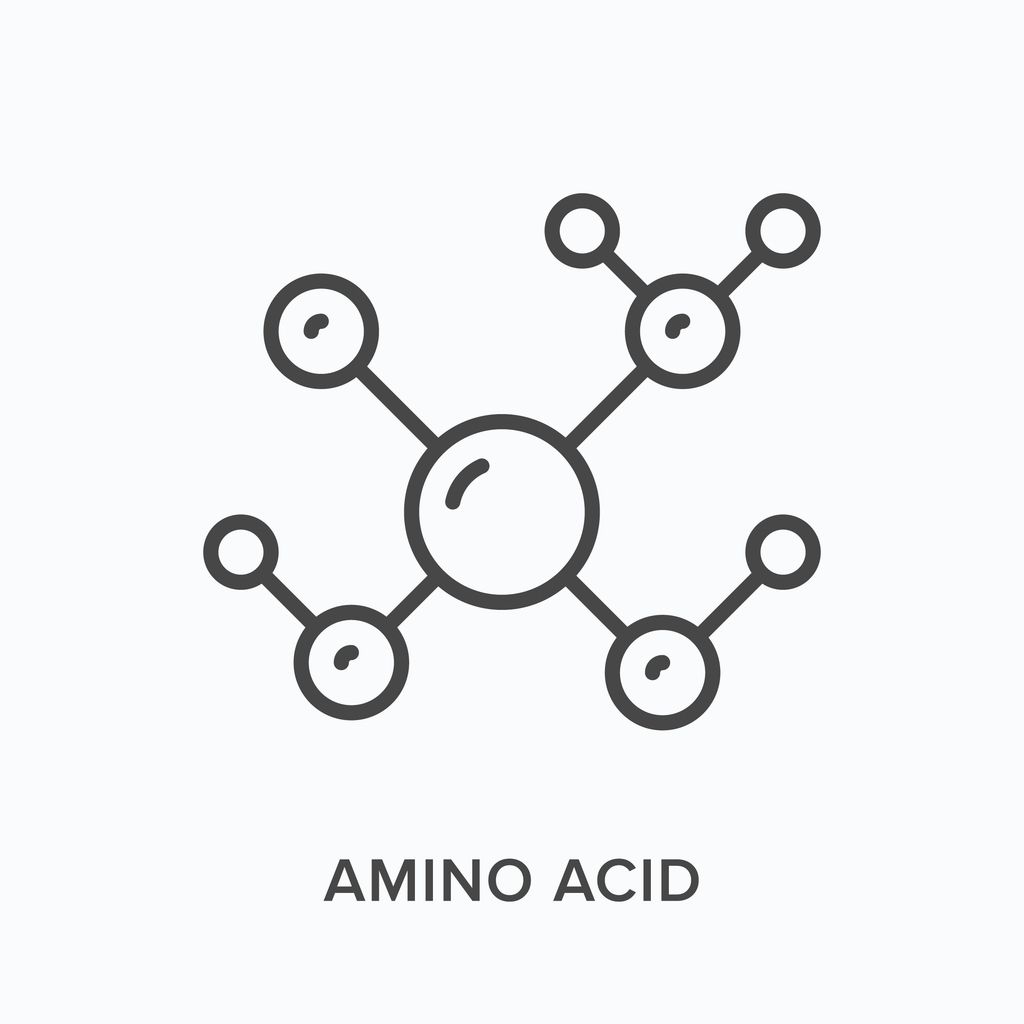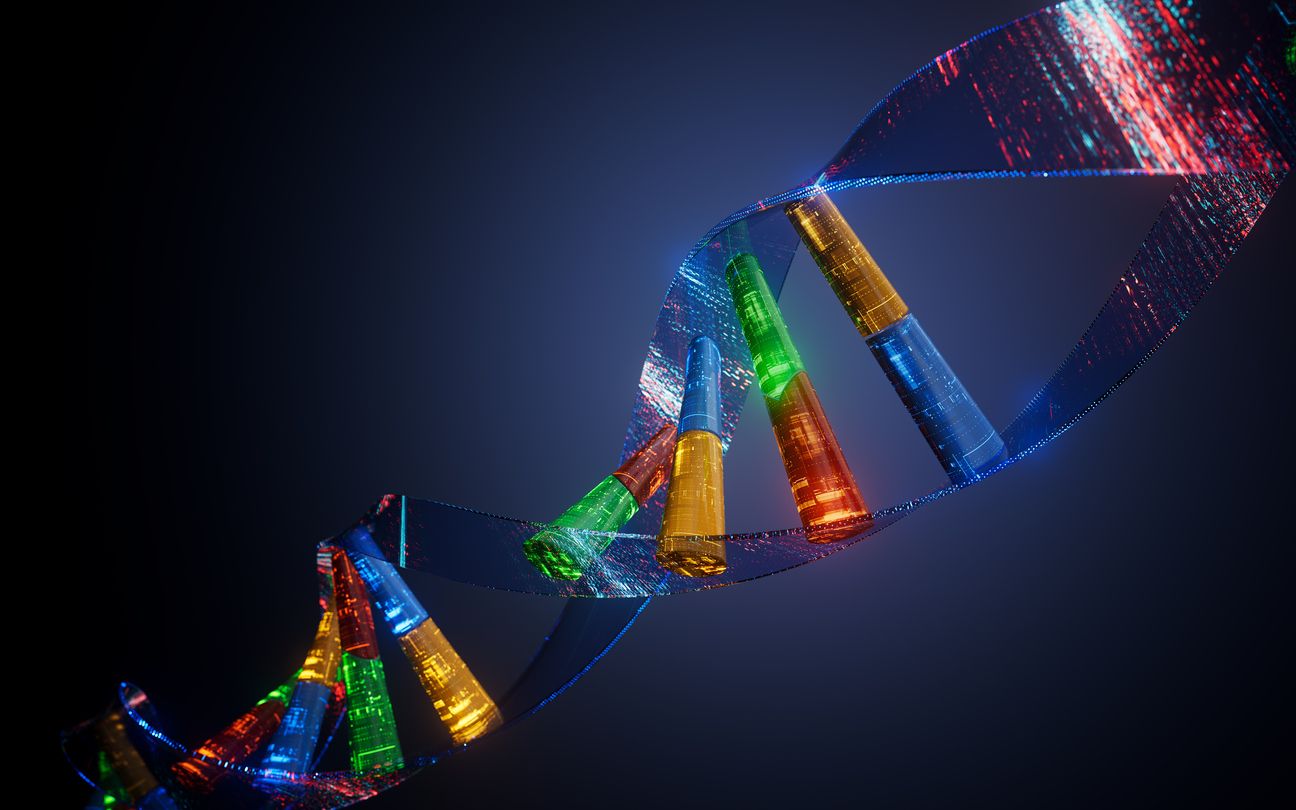- Home
- Trend
- Weight Loss Strategies
- Acne Tips
- Hair Health Information
- Blemish Removal Tips
- Acne Scar Removal Tips
- Muscle Building Techniques
- Intimate Care Tips
- Postpartum Intimate Care
- Eye Bags Wiki
- Tips for Face Slimming
- Secret of Permanent Hair Removal
- Breast Enlargement Tips
- Cure to Snoring
- Marionette Lines
- Skin-Tightening Secrets
Amino acids, the building blocks of life, are vital for skin cell function and collagen production. These essential nutrients play a crucial role in maintaining healthy, radiant skin. But with so many different amino acids, which ones are key to achieving a glowing complexion? In this article, we will delve deep into the world of amino acids, understanding how they work, their types, and which ones are essential for having a nice skin.
Amino Acids: The Foundation of Proteins

Amino acids are organic compounds composed of nitrogen, carbon, hydrogen, and oxygen. What makes them special is the presence of an amino group (-NH2) and a carboxyl group (-COOH). These groups form the backbone of amino acids, while the R group or side chain gives each amino acid its unique properties.
Proteins are made of chains of amino acids linked by peptide bonds, and this process is called protein synthesis. In the human body, proteins are responsible for building muscles, repairing tissues, producing enzymes and hormones, and supporting the immune system.
When you eat protein-rich foods, your body breaks them down into individual amino acids through digestion. These amino acids are then transported to cells where they are reassembled into new proteins. The amino acid metabolism process begins when amino acids are absorbed into the bloodstream. Each amino acid has a specific function in the body—some help build muscles, while others are used for producing enzymes or repairing tissues.
During protein synthesis, amino acids are linked together by peptide bonds to form long chains, which eventually fold into functional proteins. The sequence of amino acids in a protein determines its structure and function.
The 20 Amino Acids: Essential, Non-Essential & Conditionally Essential Amino Acids

Amino acids are the building blocks of proteins, and they play a vital role not only in muscle growth but also in maintaining the health and appearance of your skin. Among the 20 standard amino acids, there are nine of them called essential amino acids, meaning they must be obtained through diet or supplements, while the other amino acids are non-essential, as the body can synthesise them.
Both essential and non-essential amino acids contribute to the skin’s health by supporting collagen production, tissue repair, hydration, and overall skin structure. Here's how each one benefits your skin:
1. Histidine
Histidine aids in tissue repair and helps regulate the skin's pH, ensuring the protective barrier stays intact. It also reduces inflammation, making it essential for individuals with sensitive or irritated skin.
2. Isoleucine
As a branched-chain amino acid (BCAA), isoleucine aids in skin tissue repair and boosts immunity, helping the skin recover faster from injuries, acne, or environmental damage.
3. Leucine
Another BCAA, leucine promotes collagen production, which is essential for maintaining skin elasticity and firmness. It also helps repair damage from ageing, making it a key anti-aging amino acid.
4. Lysine
Lysine plays a critical role in collagen synthesis, helping maintain the skin's structure and moisture. It is also known for its antiviral properties, which can help with conditions like cold sores.
5. Methionine
Methionine contains sulphur, which supports the production of antioxidants like glutathione that protect the skin from oxidative stress. It also contributes to keratin production, keeping the skin strong and resilient.
6. Phenylalanine
Phenylalanine supports melanin production, helping with pigmentation issues and ensuring an even skin tone. It also plays a role in mood regulation, indirectly influencing the skin's appearance by reducing stress-induced breakouts.
7. Threonine
Threonine supports collagen and elastin production, keeping the skin firm and hydrated. It plays a key role in maintaining the skin’s water balance, making it essential for dry or ageing skin.
8. Tryptophan
Tryptophan promotes restful sleep, which is crucial for skin recovery and rejuvenation. Proper sleep prevents issues like dark circles, dullness, and premature ageing, making tryptophan vital for a glowing complexion.
9. Valine
Role for Skin: Valine, another BCAA, aids in tissue growth and repair, helping the skin recover from cuts, acne, and other damage. It also supports collagen production for maintaining skin firmness and texture.
The 11 Non-Essential Amino Acids and Their Role in Skin Health
10. Alanine
Alanine helps the skin retain moisture by regulating nitrogen levels, ensuring skin cells are properly hydrated and able to function efficiently.
11. Arginine
Known for promoting collagen synthesis and improving wound healing, arginine enhances blood flow to the skin, contributing to a more youthful, radiant appearance.
12. Asparagine
Asparagine supports protein synthesis and maintains cell function, which is vital for skin cell regeneration and overall skin health.
13. Aspartic Acid
Aspartic acid aids in the transport of minerals to skin cells, helping them stay nourished and healthy. It also plays a role in hydration.
14. Cysteine
Cysteine is crucial for producing keratin, the protein that strengthens the skin, hair, and nails. Its antioxidant properties also protect the skin from free radical damage.
15. Glutamic Acid
Glutamic acid helps maintain the skin’s pH balance, preventing moisture loss and keeping the skin hydrated. It's essential for maintaining a healthy skin barrier.
16. Glutamine
Glutamine supports collagen production and tissue repair, making it crucial for healing skin injuries and maintaining skin elasticity and firmness.
17. Glycine
Glycine is important for collagen formation, which keeps the skin firm and reduces wrinkles. It also helps maintain smooth and elastic skin as we age.
18. Proline
Proline is another amino acid vital for collagen production. It strengthens the skin’s structure and promotes elasticity, helping to reduce signs of ageing.
19. Serine
Serine helps maintain skin hydration by supporting the production of natural moisturising factors. It keeps the skin soft and smooth.
20. Tyrosine
Tyrosine is involved in melanin production, which helps maintain even skin pigmentation. It can also be beneficial for treating hyperpigmentation and dark spots.
免費體驗
Thermage FLX 5th Generation Face Lift Treatment
1 Minute Self-Registration
Date should not be before minimal date
The Role of Essential Amino Acids in Collagen Production and Skin Structure
One of the most important functions of essential amino acids for skin health is their role in collagen production. Collagen is a structural protein that provides skin with its firmness, strength, and elasticity. As we age, collagen production naturally declines, leading to wrinkles, sagging, and thinning skin. Essential amino acids like leucine, lysine, and methionine help support and stimulate the body’s collagen production, allowing the skin to maintain its youthful firmness.
Aside from that, hydration is another critical factor in skin health. Several essential amino acids, such as lysine and threonine, play a direct role in maintaining the skin’s moisture barrier. The outermost layer of the skin, known as the stratum corneum, contains natural moisturising factors (NMFs), which are primarily made up of amino acids.
These NMFs help the skin retain moisture, keeping it soft, supple, and resistant to external stressors. By maintaining adequate levels of essential amino acids, you can help your skin stay hydrated and plump, reducing the appearance of fine lines and dry patches.
How Essential Amino Acids Combat Skin Aging
As we age, the skin becomes more susceptible to environmental damage and the effects of oxidative stress. Essential amino acids like methionine and leucine are rich in antioxidants that help neutralise free radicals, which are responsible for skin ageing and damage. These amino acids also support the skin’s repair mechanisms, allowing it to recover more quickly from environmental stressors like UV exposure and pollution.
3 Ways in Sourcing Essential Amino Acids for Healthy Skin
Essential amino acids are called “essential” because the body cannot produce them on its own, so they must be obtained through dietary sources or supplementation. These indispensable amino acids play a vital role in skin health, helping to maintain hydration, support collagen synthesis, and enhance tissue repair, contributing to a more youthful and resilient complexion. Here’s how you can source these critical building blocks for healthier skin:
Diet as a Primary Source
When it comes to obtaining essential amino acids, animal proteins are often considered the most complete sources because they contain all nine essential amino acids in the right proportions.
Foods like fish, meat, eggs, and dairy products offer a full spectrum of essential amino acids, making them excellent choices for maintaining not only muscle health but also skin vitality. These animal-based proteins provide the key amino acid molecules needed to build collagen, elastin, and other proteins that keep the skin firm and hydrated.
However, if you prefer plant-based options, plant proteins can also provide these standard amino acids, though certain plant foods may lack one or more of the essential amino acids. For instance, soy, quinoa, and legumes are among the plant-based proteins that offer relatively complete amino acid profiles. To ensure you’re getting all the necessary building blocks for healthy skin, a combination of different plant-based foods may be needed to meet the body's requirements for α amino acids.
Supplementing with Amino Acids
If you are not able to meet your amino acid needs through diet alone, amino acid supplements are a convenient alternative. These supplements can deliver a concentrated dose of free amino acids, including the nine essential ones, to help you support your skin health more efficiently. Supplements are especially helpful for individuals following plant-based diets or for those seeking targeted skin benefits without significantly altering their diet.
Amino acid supplements can boost the levels of amino acid residues available in your body, which are critical for building proteins like collagen. Additionally, some products include combinations of three amino acids—such as glycine, proline, and lysine—that are particularly beneficial for collagen synthesis, improving skin elasticity, and reducing the appearance of fine lines and wrinkles.
Skincare Products Enriched with Amino Acids
In addition to diet and supplements, you can also benefit from amino acids topically. Amino-acid-enriched skincare products deliver certain amino acids directly to the skin, allowing them to penetrate the skin’s surface and support its natural repair processes. These products often contain combinations of two or more amino acids that hydrate, repair damage, and promote a smoother texture.
Amino acids such as arginine, serine, and proline are commonly found in topical products, where they help the skin retain moisture, reduce redness, and promote healing from environmental damage or ageing. These skincare products work on a molecular level, mimicking the natural amino acid residues found in the skin’s protective barrier. By applying them regularly, you can enhance your skin’s hydration, improve its texture, and maintain a youthful, radiant appearance.
Thermage FLX 5th Generation Face Lift Treatment: Enhancing Amino Acid Benefits for Firmer Skin
While essential amino acids are critical for maintaining skin health, including hydration, collagen production, and tissue repair, some people may desire more immediate or advanced solutions for visible signs of ageing. For those looking to firm and tighten their skin beyond what topical or dietary amino acids can provide, Thermage FLX 5th Generation Face Lift Treatment offers a non-invasive option that complements the natural benefits of amino acids.
How Thermage FLX 5th Generation Face Lift Treatment Boosts Skin Firmness
This treatment utilises radiofrequency (RF) technology to penetrate deep into the skin’s layers, stimulating collagen production where topical treatments can’t reach. This process helps tighten and lift sagging skin by promoting the regeneration of collagen, the protein responsible for skin’s structure and elasticity.
While essential amino acids like lysine and leucine aid in collagen synthesis and hydration, the treatment goes a step further by enhancing the skin’s ability to produce new collagen at a deeper level. Unlike amino acid-based skincare that works on the surface, Thermage works below the skin’s surface to target skin laxity, improving overall texture, tone, and firmness.
Pairing Amino Acids with Thermage for a Comprehensive Anti-Aging Approach
Combining a skincare routine rich in amino acids with Thermage FLX 5th Generation Face Lift Treatment can provide a powerful one-two punch for anti-aging. Amino acids are the building blocks that support hydration and maintain healthy skin structure. For example, histidine promotes tissue repair, while valine and threonine help keep the skin soft, smooth, and resilient. These amino acids naturally support your skin’s collagen levels and improve its ability to retain moisture, making them an integral part of any anti-aging strategy.
As this treatment encourages the skin to produce more collagen where amino acids support it, leading to tighter, more youthful skin. While amino acids work on hydration and surface-level care, Thermage complements this by addressing deeper skin layers, ensuring a more holistic anti-aging effect. Take your skincare to the next level by combining the power of essential amino acids with the advanced technology of Thermage FLX 5th Generation Face Lift Treatment. Don't wait—book your consultation today and experience the ultimate in non-invasive skin rejuvenation!
免費體驗
Thermage FLX 5th Generation Face Lift Treatment
1 Minute Self-Registration
Date should not be before minimal date
FAQ

1. What are nonessential amino acids, and how do they differ from essential amino acids?
Nonessential amino acids are those that the body can synthesise on its own, so they do not need to be obtained through diet. In contrast, essential amino acids, also called indispensable amino acids, must be acquired from food because the body cannot produce them. Of the twenty amino acids important for human health, nine are essential, and the remaining eleven are nonessential.
2. How many amino acids are there, and what role do they play in the body?
There are twenty standard amino acids that play various roles in the body, including building proteins, supporting metabolic functions, and aiding in chemical reactions. These amino acids consist of one amino acid that can be either essential or nonessential. Among these are branched-chain amino acids like leucine, isoleucine, and valine, which are especially important for muscle repair and growth.
3. What is the difference between α amino acids and β amino acids?
The difference between α amino acids and β amino acids lies in the position of the amino group. In α amino acids, the amino group is attached to the carbon atom directly adjacent to the carboxyl group, while in β amino acids, the amino group is attached to the second carbon atom from the carboxyl group. α amino acids are the building blocks of proteins in the human body.
4. How do amino acids contribute to protein structure?
Amino acids, with their basic amino group and acidic carboxyl group, are the building blocks of proteins. They link together through peptide bonds to form chains, which then fold into complex structures. The sequence and composition of amino acids in these chains determine the final protein structure, essential for various bodily functions, including tissue repair, hormone production, and enzyme activity.
5. What are conditional amino acids, and when does the body need them?
Conditional amino acids are typically nonessential but may become essential under certain conditions, such as illness, stress, or injury. Examples include arginine and glutamine. While the body can usually produce these nonessential amino acids, during times of heightened stress or recovery, their demand exceeds production, making dietary intake important to maintain proper nitrogen balance and support healing.








